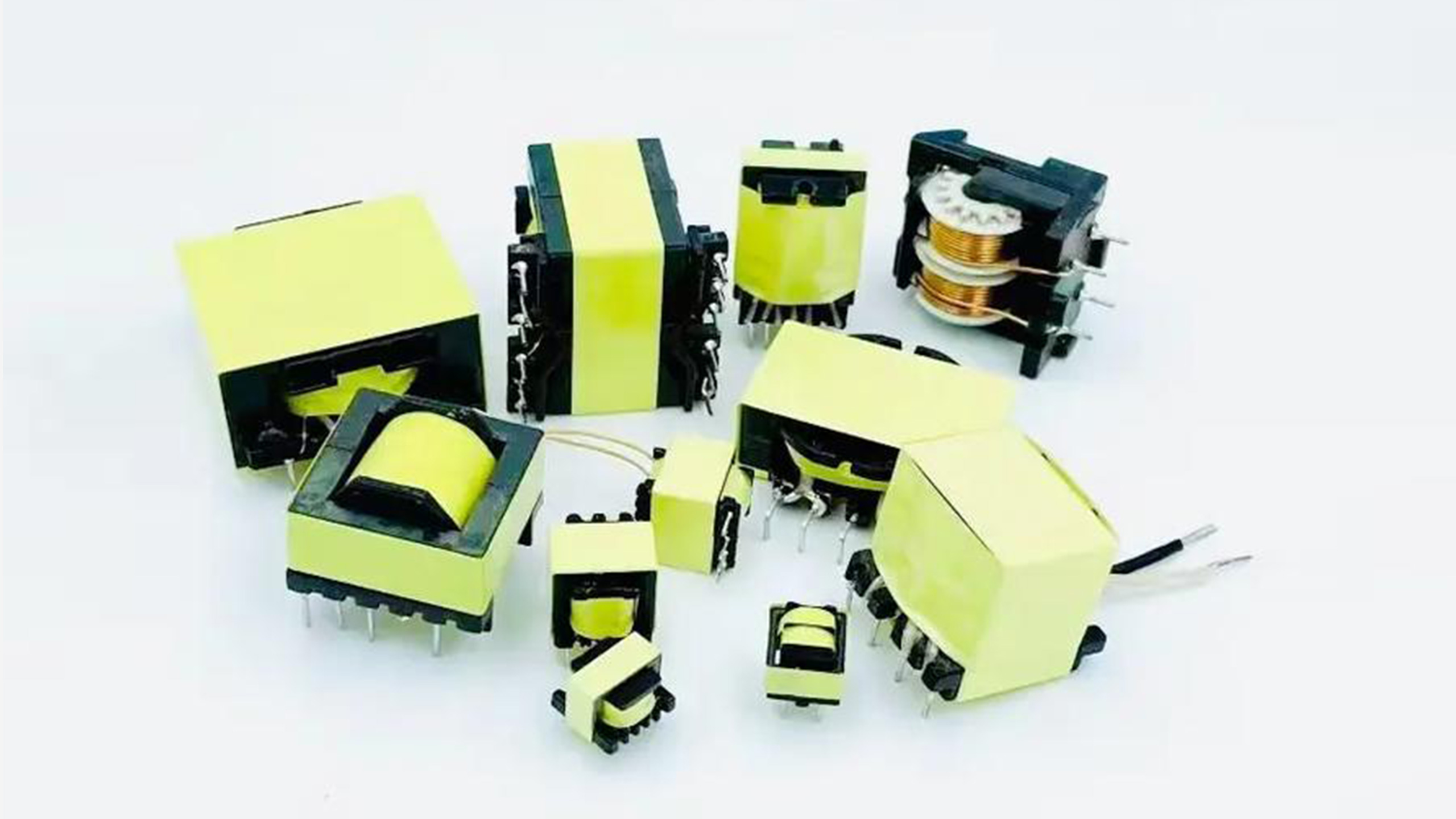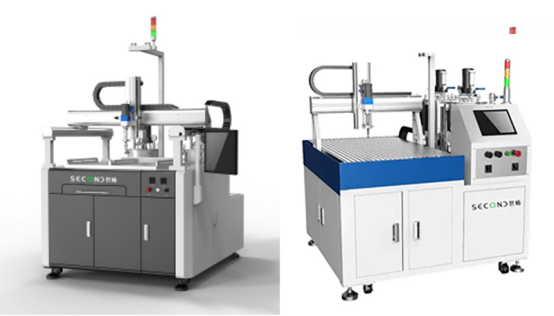Applications of Fully Automatic Potting Machines in the Inductor Coil Industry?
Fully automatic glue potting machines are widely used in the inductor coil industry. Through automation, they achieve an efficient and precise glue potting process, significantly improving product quality and production efficiency. Their application has profoundly transformed traditional manual or semi-automatic glue potting operations. The following describes their application in the inductor coil industry and details how to perform glue potting:
1.Why do inductors need glue potting?
Before discussing automated equipment, it’s important to understand the importance of the glue potting process to inductors:
a. Insulation and protection: Prevents short circuits between coil turns and protects the copper wire and magnetic core from corrosion caused by moisture, salt spray, chemicals, and dust in the air.
b. Mechanical securing and shockproofing: Fills internal gaps in the coil, securely secures the magnetic core and pins, and prevents damage from vibration and impact during transportation and use, especially in harsh environments such as automotive and industrial applications.
c. Heat dissipation and thermal conductivity: Many glues have excellent thermal conductivity, which helps dissipate heat generated by the coil during operation, preventing excessive temperature rise that can affect performance and service life.
d. Moisture-proof and sealed: The coil is completely sealed to prevent condensation or water vapor intrusion, ensuring electrical stability and reliability in high humidity environments.
2.Specific Applications of Fully Automatic Glue Potting Machines in Inductor Coil Production
Fully automatic glue dispensing machines utilize a sophisticated control system (PLC/industrial computer), high-precision metering pumps, and motion actuators to fully automate the entire process, from mixing, dispensing/dispensing, to cleaning.
The application process is as follows:
a. Loading: The semi-finished inductor coil to be dispensed is precisely placed on a jig (fixture) using a vibrating plate, conveyor belt, or robotic arm.
b. Positioning and Identification: A vision system (optional) or sensor detects coil position to ensure precise alignment of the dispensing head.
c. Automatic Proportioning and Mixing:
For two-component adhesives (such as epoxy resin and polyurethane), the machine uses a high-precision gear pump or piston pump to dispense adhesive A (primer) and adhesive B (curing agent) in a predetermined ratio (e.g., A:B = 1:1, 2:1, 4:1, etc.).
The adhesives are thoroughly and evenly mixed in the static mixer, eliminating air bubbles.
d. Precision Glue Dispensing:
A program-controlled three-axis motion system enables the dispensing head to dispense glue into the coil along a pre-set path.
Easily switch programs to achieve various trajectories, including point, line, surface, and arc, depending on the product model. This ensures that the glue completely covers the coil and fills internal gaps, while preventing spillage and contamination of pins or pads.
e. Unloading and Curing: After dispensing, the jig automatically transfers to the curing area for curing at room temperature or under heated conditions.
f. Automatic Cleaning (Optional): After production or when changing glue, the machine can perform an automatic cleaning procedure to flush the mixing tube and dispensing head, preventing glue curing and clogging, thereby reducing maintenance costs.
Fully Automatic 3-Axis Potting Machine SEC-S3030B & SEC-S3030C
The work of the mixing potting filling machine mainly depends on air pressure control. Through the air pressure device, the glue is pressed out by pressure, and the size of the glue is controlled by the pump body. At the same time, the robotic arm is responsible for controlling the moving position of the glue discharge to achieve fully automated operation. This automated operation not only solves the problem of low labor efficiency, but also greatly improves the quality of production.
3. Glue Filling Methods
a. Equipment Configuration and Core Technologies
● Multi-component Mixing System: Supports automatic mixing of AB glue (such as epoxy resin), eliminating bubbles through a dynamic agitator and vacuum degassing chamber to ensure mixing uniformity
● Intelligent Vision Positioning: Utilizes a CCD camera and laser rangefinder to identify the three-dimensional contour of the coil and automatically generates the optimal glue filling path, avoiding sensitive areas such as solder joints
● Precision Motion Control: Utilizes a three-axis robotic arm with servo motors to achieve precise glue filling at any angle within a space, adapting to complex inductor structures58;
● Dynamic Pressure Compensation: Integrates a high-precision pressure sensor and PID algorithm to adjust the glue discharge pressure in real time to address viscosity fluctuations caused by ambient temperature changes
4. Key Considerations for Selecting Fully Automatic Dispensing Machines
Given the characteristics of the inductor coil industry, the following aspects should be prioritized when selecting equipment:
Adhesive Type: Determine whether single-component adhesives (e.g., silicone) or two-component adhesives are used. For two-component adhesives, focus on the machine’s metering precision and mixing effectiveness.
Dispensing Precision: Inductor coils are typically small in size, demanding precise adhesive volume control (0.1 grams or higher). Machines must offer micro-level precision control capabilities.
Vision System: For products with dense pins or extremely high positioning requirements, installing a CCD vision positioning system is recommended to automatically correct positional deviations.
Cure Prevention and Cleaning: Select models with automatic cleaning functions to significantly enhance material changeover efficiency and production continuity.
Fixture Design: Fixtures must be custom-engineered for coil products to ensure precise positioning. Needle-type dispensing heads may be required to penetrate deep into coil interiors for filling.
Summary
The application of fully automatic potting machines in the inductor coil industry serves as a prime example of achieving “smart manufacturing” and “quality upgrades.” It goes beyond mere manual replacement, addressing core pain points in inductor coil reliability, consistency, and production efficiency through advanced automation, digitalization, and precision control. This aligns particularly well with the increasingly stringent quality demands for inductor components in sectors such as automotive electronics, industrial control, and high-end communication equipment. For inductor manufacturers aiming to enhance market competitiveness, investing in fully automated potting machines has become an inevitable trend.
Second Intelligent has played an important role in theresearch, development, manufacturing, pre-sales and after-sales services of fluid dispensing robot, potting and coating solutions which range from various types of automatic fluid dispensing, potting, two-component potting machines and coating machines with desktop, free-standing, inline or cobot combined systems, and widely used in global electrical, electronics, home appliances, automobile, telecom, pharmaceutical, automotive electronics, semiconductor, aerospace, LED and more.



